Travelers can choose from a wide variety of attractions in Turkey. Turkey is a diverse and beautiful country, from the domed and minaret-studded skyline of Istanbul to the Roman remains along the western and southern shores, from the beaches of Antalya and the Mediterranean coastal resorts to the foggy mountains of the eastern Black Sea. Turkey is home to so many great sights that any list of just 10 would be incomplete. Think of this as the beginning of a fantastic vacation in Turkey, full of amazing experiences.
10. Aspendos Theatre
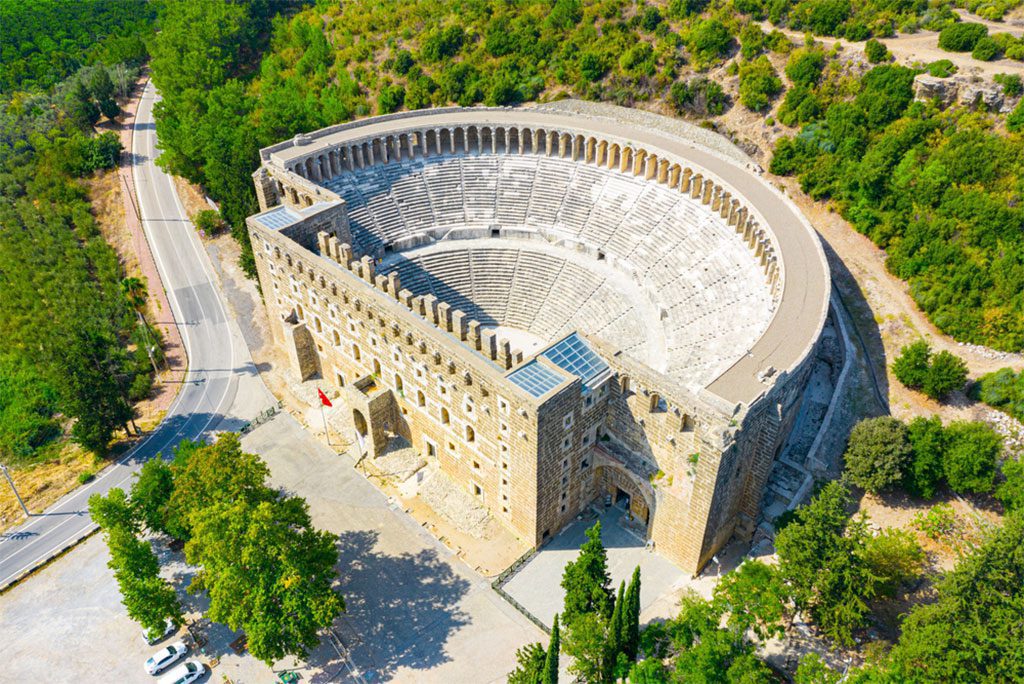
Aerial view of the well-preserved Aspendos amphitheater in Antalya, Turkey. Image source: proslgn/Shutterstock.com
The ancient theater at Aspendos is remarkably well preserved. Built in 155 AD under the Roman Emperor Marcus Aurelius, the Aspendos Theater had a capacity of 15,000–20,000 people. When the Seljuks occupied the region, it was converted into a caravanserai (a kind of roadside inn), therefore it was constantly maintained and updated. This is why the Aspendos Theatre has lasted until modern times while retaining almost all of its original features.
9. Patara Beach
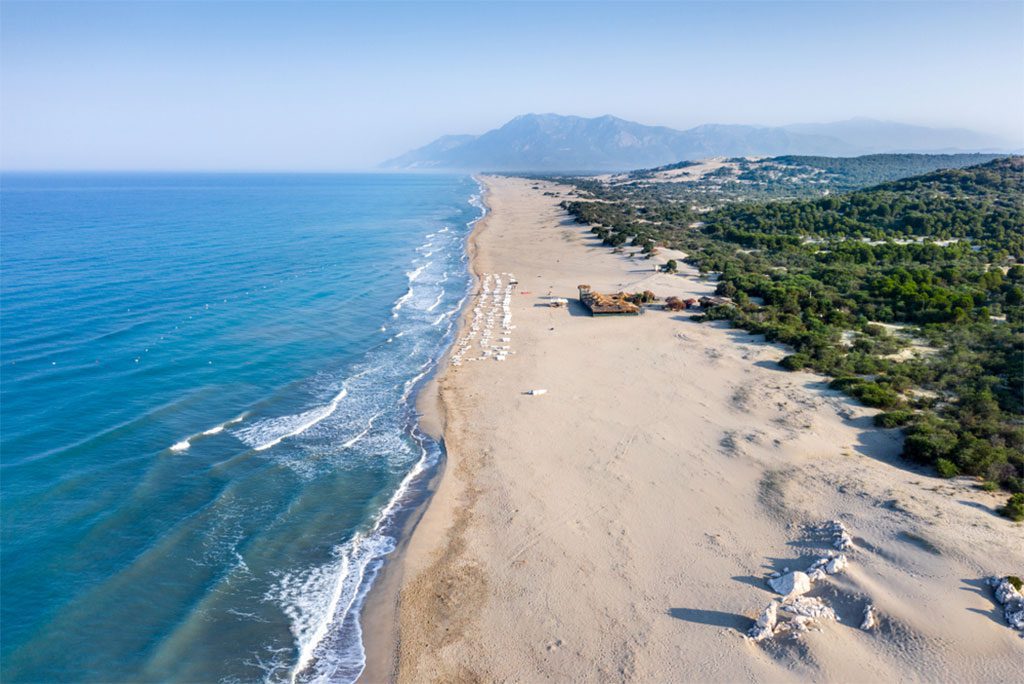
A stunning aerial view of Kalkan, a small town in Antalya, Turkey. Image source: fotopanorama360/Shutterstock.com
Patara has one of the longest expanses of sandy beach in all of the Mediterranean, stretching for a total of 14 kilometers, or 9 miles. All that can be seen beyond the beach’s sandy expanse are the sloping dunes and crumbling remnants of ancient Lycian and Roman civilizations. The critically endangered Loggerhead turtle uses Patara Beach every year to lay her eggs. St. Nicholas, the Byzantine bishop who became better known as Santa Claus, was born in the nearby village of Patara.
8. Pamukkale
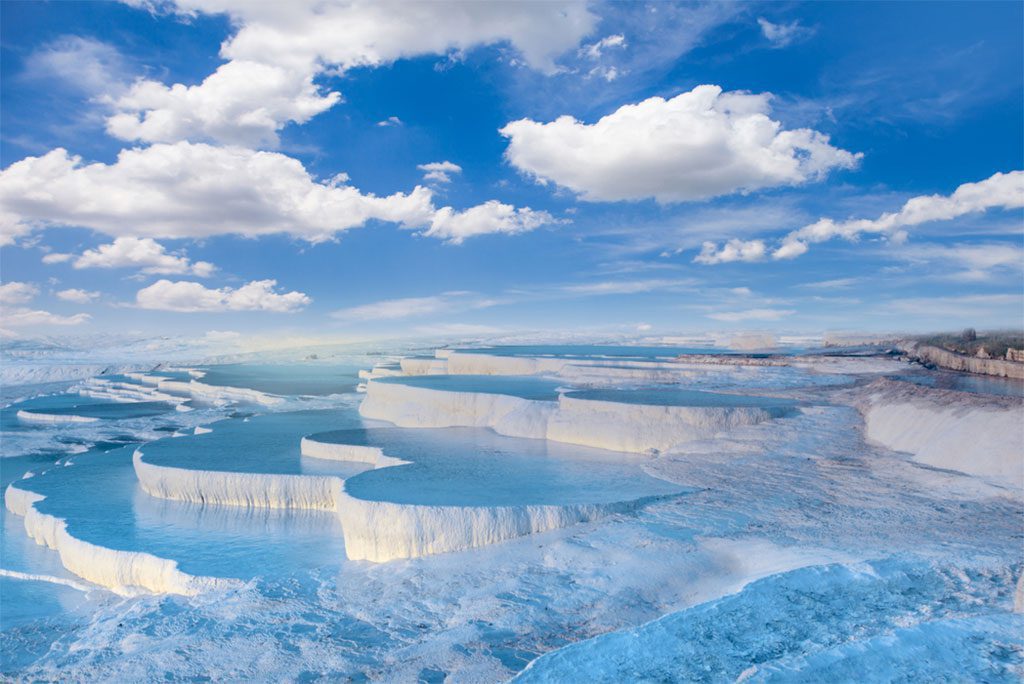
A breathtaking view of the natural travertine pools and terraces in Pamukkale, Turkey. Image source: muratart/Shutterstock.com
Pamukkale, which literally translates to “cotton castle” in Turkish, is an otherworldly scenery in the country’s western region. The mineral-rich waters of the hot springs precipitated the sedimentary rock known as travertine, which was used to construct the terraces. For thousands of years, its pools have been used as public baths. Hierapolis, a Greek city founded by the rulers of Pergamon, was situated above natural hot springs. The site has the remnants of ancient Greek buildings, including temples and baths.
7. Bodrum Castle
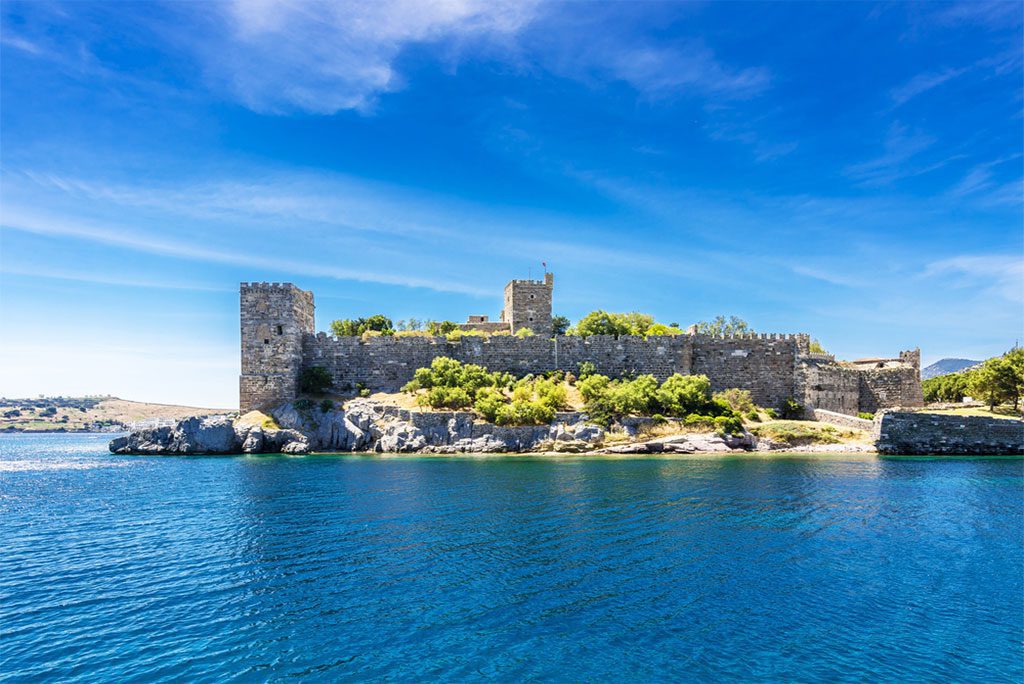
A stunning view of the Bodrum Castle from the sea. Image source: Nejdet Duzen/Shutterstock.com
Bodrum Castle, in the city of Bodrum, southwest Turkey, was originally constructed as the Castle of St. Peter by Crusaders in the 15th century. It is one of the best examples of a medieval structure to have survived to the present day. The castle is now a museum, with much attention directed toward its Museum of Underwater Archaeology. It looks out over Bodrum’s inner harbor, where multimillion-dollar sailing yachts are docked.
6. Mount Nemrut
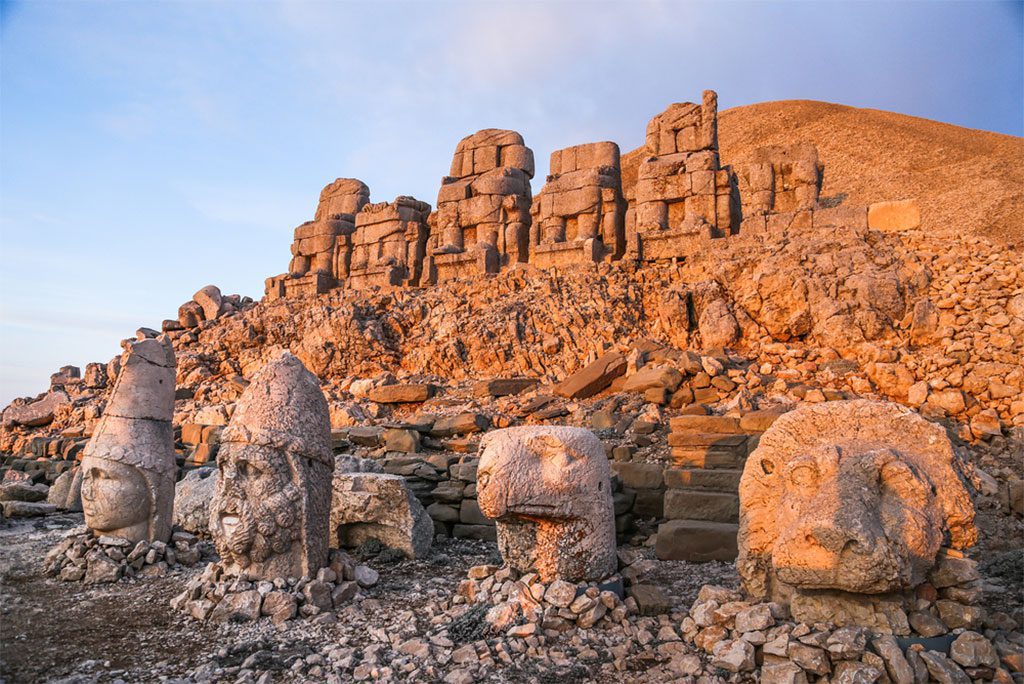
A beautiful sunrise view of the East terrace of Mount Nemrut in Turkey. Image source: thipjang/Shutterstock.com
A mountain with an elevation of 2,134 meters (7,001 feet), Nemrut can be found in southeastern Turkey, not far from the city of Adiyaman. Huge sculptures of King Antiochus I Theos of Commagene, two lions, two eagles, and several Greek and Persian gods flanked the entrance to the tomb-sanctuary he constructed on the mountaintop in 62 BC. The heads have fallen off the corpses and are now strewn throughout the building site. Mount Nemrut’s peak is a fantastic vantage point for taking in the scenery of the surrounding ranges. Watching the dawn from the eastern terrace, which casts a stunning orange glow over the bodyless heads and adds to the ethereal quality of the area, is the major draw.
5. Oludeniz
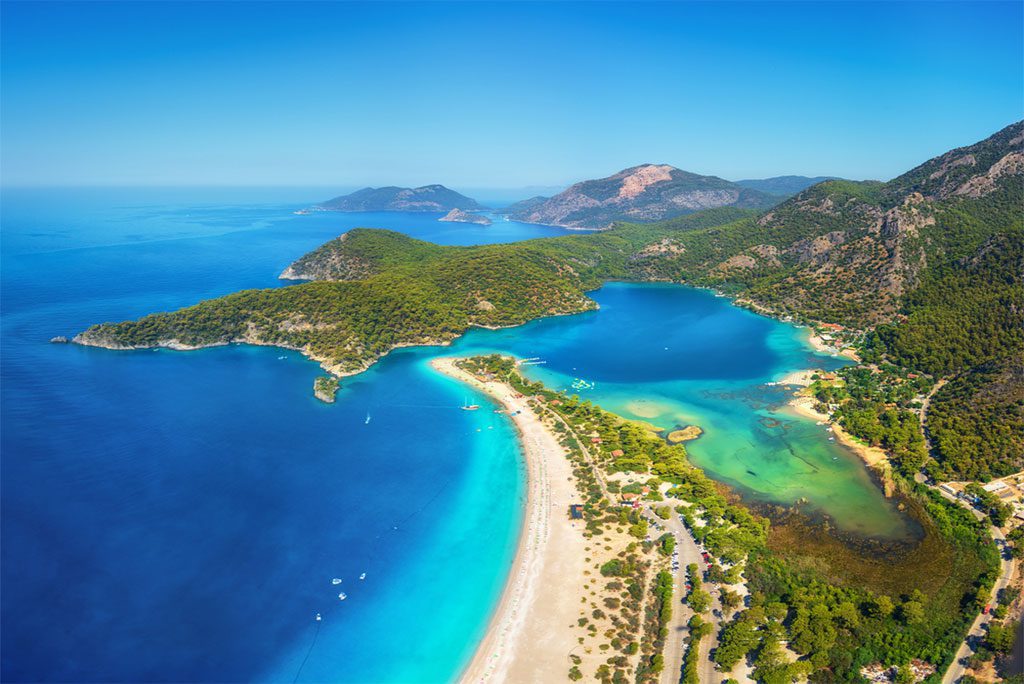
A stunning aerial view of the Blue Lagoon in Oludeniz, Turkey. Image source: Denis Belitsky/Shutterstock.com
Ölüdeniz is a small village on the Aegean Sea’s southwestern shore. At the mouth of Ölüdeniz, on a blue lagoon, is a private sandy bay. One of the most photographed beaches in the Mediterranean, this one has become famed for its turquoise waters. Due to its unparalleled vistas, Ölüdeniz is also considered one of the top spots to go paragliding in the world.
4. Blue Mosque
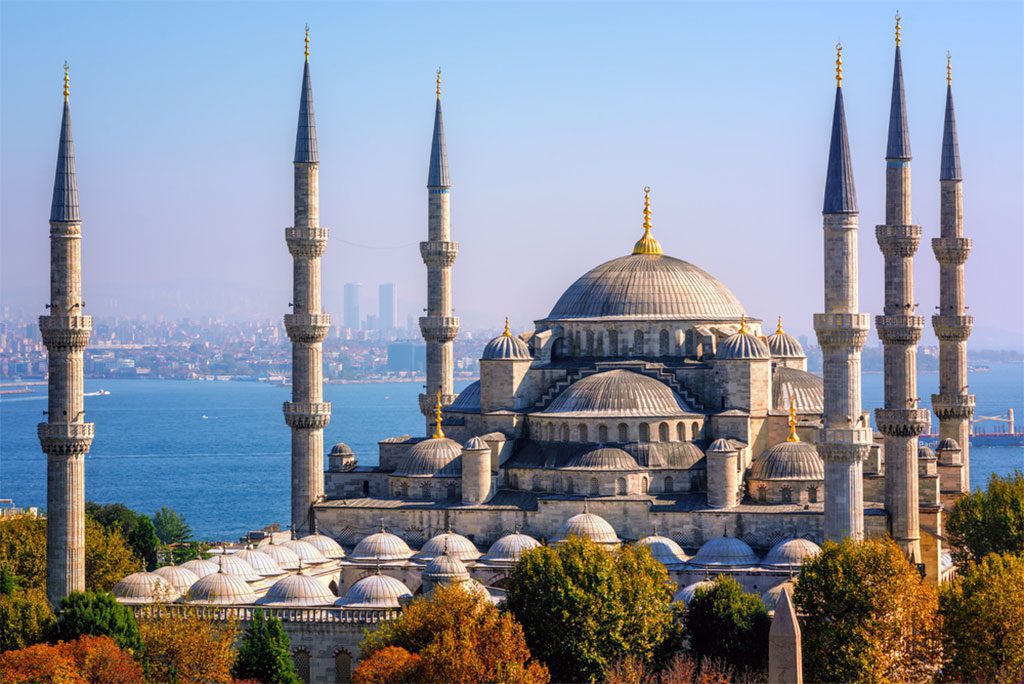
A beautiful view of the Blue Mosque, Bosporus and Asian side skyline in Istanbul, Turkey. Image source: Boris Stroujko/Shutterstock.com
The Sultan Ahmed Mosque, often known as the Blue Mosque, in Istanbul is a stunning structure from the exterior. In addition to its religious function, the Blue Mosque is also one of Istanbul’s most visited sites. Constructed between 1609 and 1616, it houses the founder’s tomb like so many other mosques. This well-known mosque gets its name from the 20,000 blue tiles of varying designs that decorate the towering interior ceiling.
3. Library of Celsus
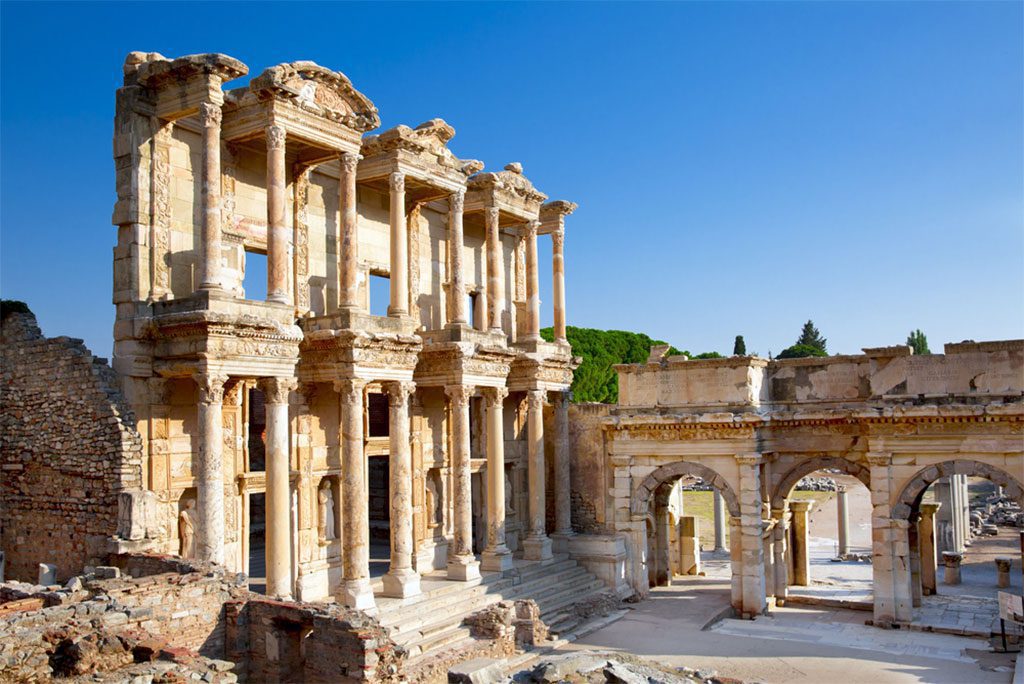
A view of the Celsus Library in the ancient city of Ephesus, Turkey. Image source: muratart/Shutterstock.com
A lot of people visit the west coast to check out the Ephesus ruins. The Temple of Artemis at Ephesus was one of the seven wonders of the ancient world, but a crowd headed by the archbishop of Constantinople in 401 A.D. demolished it. While many of the buildings have been destroyed, others, such as the Great Theater and the Library of Celsus, remain visible. In addition to housing 12,000 scrolls, the library was also used as a grandiose burial site for the governor of Asia, Celsus, who died in 125 AD. In the 1970s, the façade was painstakingly restored from its original components to its current magnificent form.
2. Goreme Fairy Chimneys
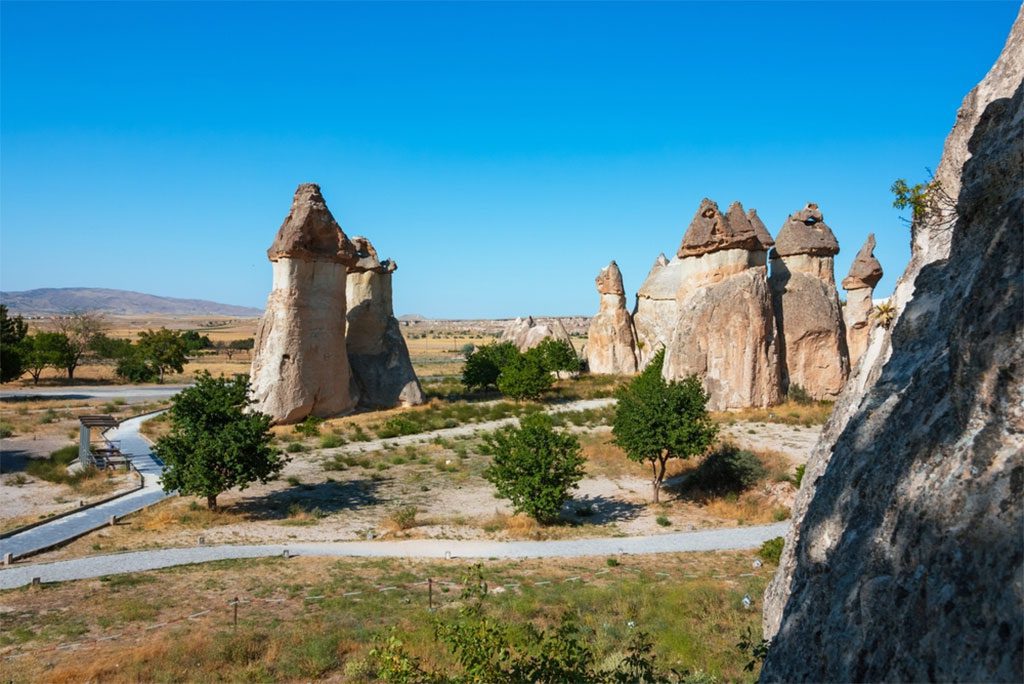
A view of the unique rock formations known as “fairy chimneys” in Pasabagi, Cappadocia, Turkey. Image source: Sener Dagasan/Shutterstock.com
Cappadocia is well known throughout the world for its otherworldly geological marvels and fascinating history. The town of Göreme is surrounded by several tuff cones, sometimes known as “fairy chimneys,” and is one of the best spots to observe these peculiar structures. The fairy chimneys were shaped by wind and water erosion of two distinct volcanic layers: a thick layer of tuff (consolidated volcanic ash) and a thinner, more resistant layer of basalt. As tuff is very simple to carve, many of Cappadocia’s fairy chimneys have been carved out throughout the years to be used as houses, churches, and underground cave complexes.
1. Hagia Sophia
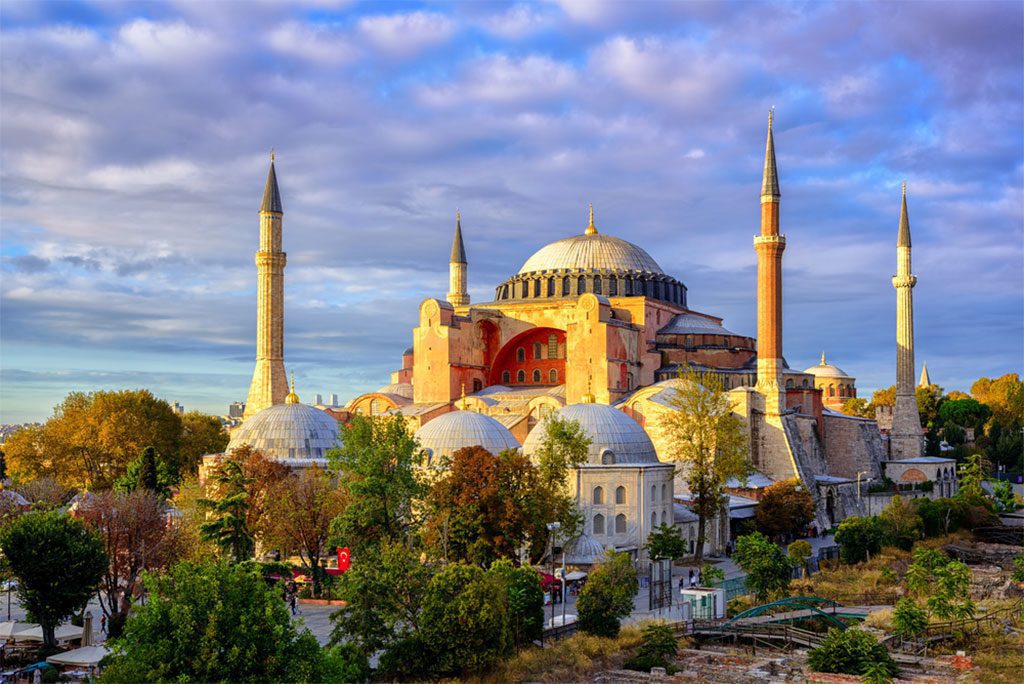
A stunning view of the Hagia Sophia domes and minarets in the old town of Istanbul, Turkey. Image source: Boris Stroujko/Shutterstock.com
The Hagia Sophia in Istanbul was originally a basilica built in the sixth century for the Eastern Roman Emperor Justinian I. The immense dome (31 meters, or 102 ft in diameter) is a Roman architectural marvel, and it covers what was, for over a thousand years, the biggest enclosed area in the world. After being pillaged by the Fourth Crusade in 1204, the church was converted into a mosque by the Ottomans, who captured the city in the 15th century. In 1935, the Hagia Sophia was turned into a museum, and since then it has become one of Turkey’s most visited landmarks.


